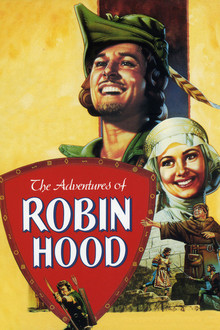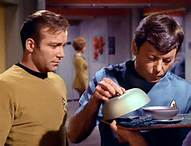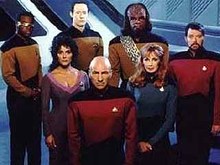Is That What You’re Wearing? Or, Books Have A Bigger Budget
 One of the most common topics of conversation among those who both read books and watch movies is the difference between the one and the other. Often it’s specific things like “that’s not how I pictured the protagonist” or, “where’d my favourite character go?” Sometimes it’s more general stuff like which medium did the overall job better.
One of the most common topics of conversation among those who both read books and watch movies is the difference between the one and the other. Often it’s specific things like “that’s not how I pictured the protagonist” or, “where’d my favourite character go?” Sometimes it’s more general stuff like which medium did the overall job better.
That kind of argument can go on all night, but one thing is not in doubt: No matter how much money is spent on a movie or TV show, books have a bigger budget. Look at the big picture: In a book you can have your characters go anywhere you’d like, live wherever you’d like, and use whatever transportation you’d like and it doesn’t cost you a dime. You don’t have to have the budget to reproduce your ideas on the screen.
And this just as true for every aspect of the smaller picture, though just now I’m going to talk about what your characters are wearing. No outfit is too extravagant, too simple, too colourful or too plain for your reader’s imagination. Your characters can even wear clothing that it is virtually impossible to eat, walk, or sit down in – as some cosplayers have discovered for themselves.
 And at the other extreme, no filmmaker has managed to recreate the – uh – clothing worn by the people of Barsoom (as described in the novels) with any real accuracy.
And at the other extreme, no filmmaker has managed to recreate the – uh – clothing worn by the people of Barsoom (as described in the novels) with any real accuracy.
On the other hand, you have TV shows where everyone on a particular planet, or in a particular society, wears the same clothing, usually including the same colours. We might argue that in totalitarian states this is not out of the question, but on TV or in the movies it’s a budgetary thing. There’s been some improvement recently, but it’s mainly because the budgets for TV shows like Game of Thrones or True Blood have greatly increased. Compare, for example, the clothing in The Adventures of Robin Hood, with Errol Flynn, and any episode of Game of Thrones, or any of the LOTR movies.
 On another note, some styles are associated with particular genres. Whether on paper or film, a great number of fantasy characters, including those of GOT or LOTR, are dressed in that pseudo-medieval/renaissance style we’re all familiar with. Much of SF clothing is of the “jumpsuit” variety, that is, all one piece, simple, unadorned, smooth, sleek, etc. On the other hand, the clothing of pretty much any military or quasi-military group, regardless of genre or time period is rather, well, uniform is the only way to put it. Here again, however, written narratives generally can get more complex than film.
On another note, some styles are associated with particular genres. Whether on paper or film, a great number of fantasy characters, including those of GOT or LOTR, are dressed in that pseudo-medieval/renaissance style we’re all familiar with. Much of SF clothing is of the “jumpsuit” variety, that is, all one piece, simple, unadorned, smooth, sleek, etc. On the other hand, the clothing of pretty much any military or quasi-military group, regardless of genre or time period is rather, well, uniform is the only way to put it. Here again, however, written narratives generally can get more complex than film.
Getting even more specific, some characters are associated not only with particular clothing styles, but with particular clothing. Any and every Dr. Who, for example. Robin Hood and Sherlock Holmes are so much associated with their clothing that a cap with a feather, or a deer-stalker hat, all by themselves, immediately bring to mind the leader of merry men and the great detective. Rumpled raincoat? Lt. Columbo. Loin cloth? Tarzan.
Don’t get me started on superheroes.
When a TV show – or a movie for that matter, though movies generally have bigger budgets in the first place – gets a reboot, one of the most obvious changes is in the character’s clothing. Not the least of which is that they now have more than one outfit. It’s only when a great deal of money is spent, on designs, on fabrics, and on seamstresses for that matter, that movies and TV can come even close to what a book can accomplish.
Violette Malan is the author of the Dhulyn and Parno series of sword and sorcery adventures, as well as the Mirror Lands series of primary world fantasies. As VM Escalada, she writes the Faraman Prophecy series. Book One, Halls of Law, is out now; Book Two, Gift of Griffins, is available for pre-order. Find Violette on Facebook and follow her on Twitter @VioletteMalan.
This actualy makes me wonder about the merits of deliberately writing fantastic adventures with a low budget for sets, props, and special effects in mind. It doesn’t mean that everything has to be more mundane, but an effort to get the most sense of wonder out of the smallest amounts of fantastic elements.
I have a hunch that you could create a certain kind of charm with this method that you don’t find in works that “throw tons of money at the screen”.
Gene Wolfe at one point said that one of the reasons for writing Shadow of the Torturer was that he wanted to write a character wearing an outfit that could be cosplayed at a con.